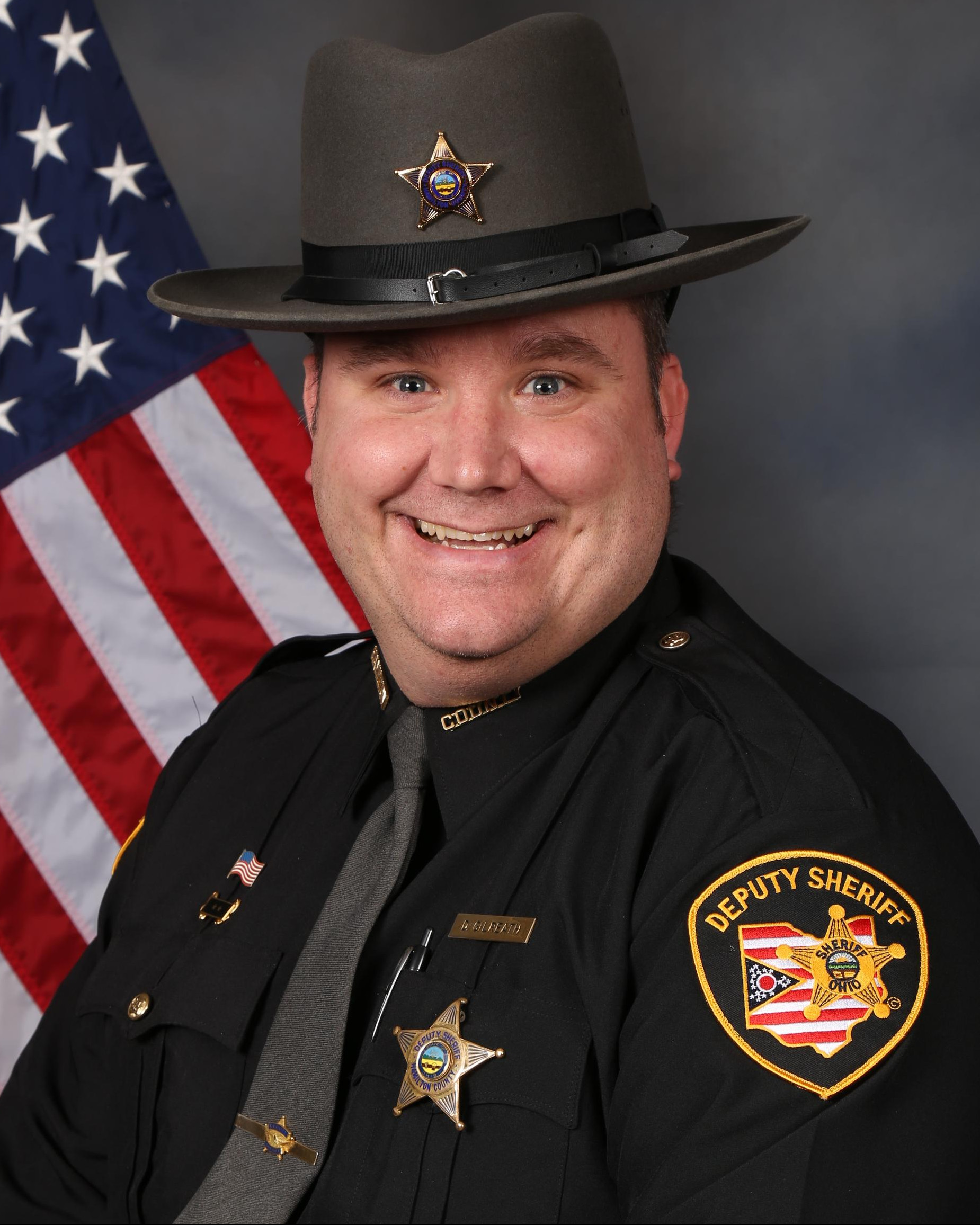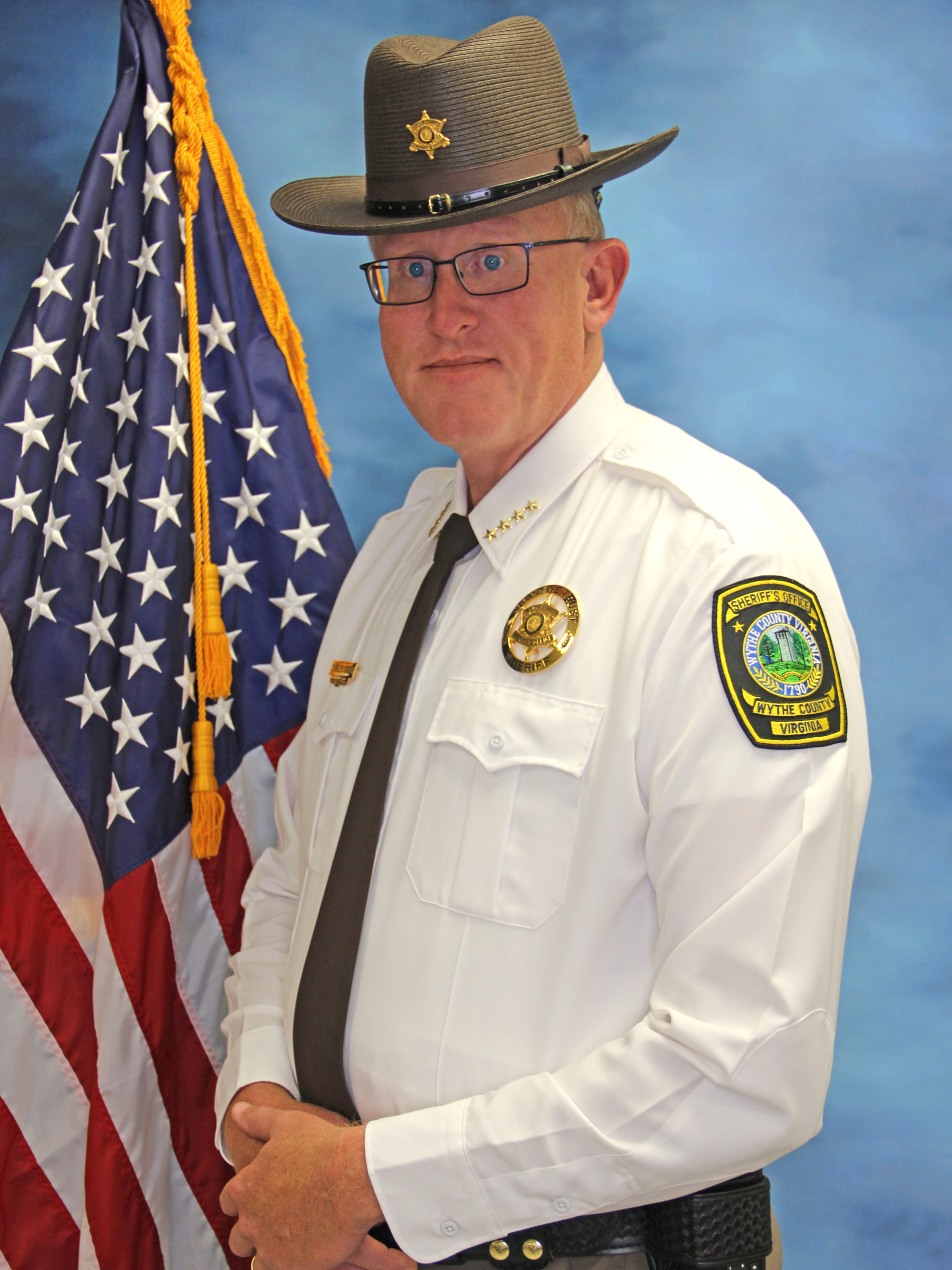The news sent shockwaves through the quiet, close-knit community of Letcher County, Kentucky. Shawn Mickey Stines, a figure entrusted with public safety and a longtime friend to many, including the judiciary, was suddenly at the center of a devastating tragedy. The arrest of Sheriff Stines in connection with the fatal shooting of District Judge Kevin Mullins was an event that defied belief, leaving residents grappling with grief, confusion, and a profound sense of betrayal. This article delves into the complex and tragic events surrounding former Sheriff Stines Kentucky, exploring the details of the incident, the subsequent legal proceedings, and the lingering questions that continue to haunt the Appalachian town of Whitesburg.
The story of Shawn Mickey Stines is not merely a local headline; it’s a deeply human narrative about the weight of public office, personal struggles, and the devastating consequences when those two worlds collide. From the courthouse where he once upheld the law to the courtroom where he now faces grave charges, the journey of Sheriff Stines has captivated and saddened a nation. Understanding this unfolding drama requires a closer look at the man, the events, and the community forever altered by that fateful day in September.
Table of Contents
- Who is Shawn "Mickey" Stines? A Biographical Sketch
- The Unthinkable Day: September's Tragedy in Whitesburg
- Immediate Aftermath and Resignation
- The Legal Labyrinth: Charges and Proceedings
- Past Allegations: A Shadow Over Public Service
- The Broader Impact on Letcher County and Kentucky
- Navigating the Complexities of Public Service and Accountability
Who is Shawn "Mickey" Stines? A Biographical Sketch
Before the tragic events that thrust him into the national spotlight, Shawn Mickey Stines was a prominent figure in Letcher County, Kentucky. Known to many simply as "Mickey," he had served as the county's sheriff for several years, a position of significant responsibility and trust within the community. His role as sheriff meant he was not only responsible for general law enforcement but also for the personal security of judges, a detail that adds a layer of profound irony and tragedy to the events that unfolded.
- Partridge Family Cast
- Judy Garlands Daughter
- January 18 Zodiac
- Kim Kardashian Sexy
- Walking Dead Spin Offs
Prior to his tenure as sheriff, Stines had experience within the judicial system, having served as a bailiff at the Letcher County District Court. This background suggests a career path dedicated to public service and the legal system, making the allegations against him even more difficult for those who knew him to comprehend. His life, seemingly dedicated to upholding the law, took an unexpected and devastating turn that has left many questioning the pressures and personal battles that can exist behind the badge.
Personal Data & Biodata: Shawn "Mickey" Stines
| Attribute | Detail |
|---|---|
| Full Name | Shawn Mickey Stines |
| Age | 43 (at the time of reported events) |
| Former Position | Letcher County Sheriff |
| Prior Role | Bailiff at Letcher County District Court |
| Key Event | Charged with the murder of District Judge Kevin Mullins |
| Location of Incident | Letcher County Courthouse, Whitesburg, KY |
| Legal Status | Indicted on murder charges, currently awaiting trial |
The Unthinkable Day: September's Tragedy in Whitesburg
The incident that irrevocably altered the lives of many in Letcher County occurred on a Thursday in September, specifically the 19th, at the Letcher County Courthouse in Whitesburg, Kentucky. This small Appalachian town, typically known for its scenic beauty and tight-knit community, became the scene of an unimaginable crime. Sheriff Shawn Mickey Stines, the very individual sworn to protect the peace, was arrested following a fatal shooting inside the courthouse. The victim was District Judge Kevin Mullins, a respected figure in the legal community and a longtime acquaintance of Stines.
The shock was palpable. A public official, responsible for the security of the very person he was accused of killing, had allegedly committed such an act within the hallowed halls of justice. The courthouse, a symbol of order and law, was transformed into a crime scene, leaving an indelible mark on the community's psyche. The event quickly drew statewide and even national attention, as the details began to emerge, painting a picture of a tragedy far more complex than a simple act of violence.
- Matthew Mcconaughey And Woody Harrelson
- Lisa Turtle
- Bruce Lee Cause Of Death
- 5th Harmony
- Middle Names For Girls
A Friendship Turned Fatal: Judge Kevin Mullins
District Judge Kevin Mullins was not just a public official; he was, according to sources, a longtime friend and work associate of Shawn Mickey Stines. This deep personal connection between the accused and the victim makes the tragedy all the more poignant. Judge Mullins presided over the 47th District Judicial District, a role that placed him at the heart of justice in Letcher County. Before becoming a judge, Mullins had also served as a bailiff at the Letcher County District Court, indicating a shared professional background with Stines.
The relationship between a sheriff and a judge is inherently one of trust and cooperation, particularly when the sheriff is responsible for the judge's personal security. The idea that this professional and personal bond could culminate in such a violent act has left many struggling to reconcile the known facts with the devastating outcome. The community mourned not only the loss of a respected judge but also the shattering of trust in a system that relies on the integrity of its public servants.
The Moments Leading Up to the Shooting
While the full narrative of what transpired in Judge Mullins' chambers on that September day is still unfolding through legal proceedings, preliminary details shed some light on the events leading to the shooting. According to initial reports, the fatal incident occurred after an argument between Stines and Mullins inside the judge's chambers. The nature of this argument remains a key point of investigation, but it appears to have escalated rapidly and tragically.
Adding another layer of complexity to the narrative, sources close to the situation in Letcher County have indicated that Stines and his wife had some sort of a dispute the night before he fatally shot Mullins. While the direct connection between this personal dispute and the courthouse shooting is not explicitly stated, it suggests a potential undercurrent of personal turmoil in Stines' life that may have contributed to the tragic events. The combination of professional pressures and personal strife paints a grim picture of the circumstances that may have led to the unthinkable act committed by Sheriff Stines Kentucky.
Immediate Aftermath and Resignation
The immediate aftermath of the shooting was a scene of chaos and disbelief. Law enforcement quickly secured the area, and Shawn Mickey Stines was arrested at the scene. He was subsequently charged with murder in the first degree, specifically the murder of a public official. The swiftness of the arrest underscored the gravity of the situation and the clear evidence pointing to Stines as the perpetrator.
In the days following the shooting, the pressure mounted on Stines. He was held in another Kentucky county, a measure often taken in high-profile cases involving local officials to ensure impartiality and security. On Monday, following the Thursday shooting, Shawn Mickey Stines resigned from his position as Letcher County Sheriff. This resignation was a critical step, acknowledging the impossibility of him continuing in a role of public trust while facing such severe charges. Governor Beshear, in a message posted on X (formerly Twitter), acknowledged the tragic event, reflecting the statewide concern over the incident involving Sheriff Stines Kentucky.
The community's reaction was a mix of profound grief for Judge Mullins and bewilderment regarding Stines. For many, the man they knew as Sheriff Stines was a pillar of the community, making his alleged actions incredibly difficult to reconcile. The resignation, while necessary, further solidified the tragic reality of the situation for the residents of Whitesburg and beyond.
The Legal Labyrinth: Charges and Proceedings
The legal journey for Shawn Mickey Stines began almost immediately after his arrest. He was arraigned by video before a special judge, who was appointed to stand in for the local judiciary, given the involvement of a district judge in the case. This initial arraignment took place in Morgan County, a location chosen for its distance from the immediate emotional impact of the tragedy in Letcher County. During this hearing, Stines was seen wiping his eyes as he listened to testimony, a poignant image reflecting the weight of the situation.
A preliminary hearing followed, where shocking video footage showing the killing of Judge Mullins in his chambers was reportedly played. Such evidence would undoubtedly be crucial in establishing the facts of the case. Less than a month after the shooting, the murder case against Stines was handed over to a grand jury. This body ultimately indicted Stines on one count of murder of a public official, moving the case forward to a full trial.
The Insanity Defense: A Glimpse into Legal Strategy
As the legal process progresses, court documents have revealed a significant development in Stines' defense strategy: his plans to use an insanity defense. This legal tactic, while not uncommon in high-profile murder cases, suggests that the defense will argue that Stines was suffering from a severe mental disease or defect at the time of the shooting, rendering him unable to appreciate the nature or wrongfulness of his actions.
An insanity defense often involves extensive psychiatric evaluations and expert testimony to convince a jury of the defendant's mental state. It is a complex and challenging defense to mount successfully, as it requires demonstrating a profound impairment of mental function. The introduction of this defense adds another layer of complexity to an already intricate case, shifting the focus from simply "who did it" to "what was his state of mind when he did it." This aspect of the legal battle will undoubtedly be a central focus as the trial proceeds, aiming to understand the underlying factors that may have driven the actions of Sheriff Stines Kentucky.
Past Allegations: A Shadow Over Public Service
The tragic shooting of Judge Mullins was not the first time Shawn Mickey Stines' name appeared in legal documents concerning alleged misconduct within the Letcher County Sheriff's office. In a 2022 lawsuit filed in U.S. District Court, Stines was listed as a defendant. This lawsuit alleged that a Letcher County deputy sheriff, identified as Ben Fields, offered favorable treatment for sexual favors. The core of the accusation against Stines in this context was his alleged failure to act upon these serious claims.
This prior lawsuit casts a long shadow over Stines' tenure as sheriff, suggesting a pattern of potential oversight or complicity in misconduct within his department. While entirely separate from the murder charge, these allegations contribute to a broader picture of the challenges and controversies that may have surrounded his leadership. They raise questions about accountability within public office and the mechanisms in place to address such issues. The combination of these past allegations with the current murder charge paints a complex and troubling portrait of the former Sheriff Stines Kentucky, highlighting the multifaceted pressures and ethical dilemmas that can arise in positions of power.
The Broader Impact on Letcher County and Kentucky
The deadly shooting of Judge Kevin Mullins by Shawn Mickey Stines has left an indelible scar on Letcher County. This isn't just a news story; it's a profound community trauma. The loss of a respected judge, coupled with the alleged actions of their sheriff, has created a deep sense of shock, grief, and disorientation. Sources in Letcher County have shared their personal insights and sorrow, illustrating how deeply this event has impacted the social fabric of the small Appalachian town. The trust in public officials, vital for the functioning of any community, has been severely shaken.
Beyond the immediate emotional toll, the incident raises significant questions about the security of public officials, particularly judges, and the mental health support available to law enforcement officers. If the very person responsible for a judge's safety is accused of their murder, it forces a reevaluation of existing protocols and safeguards. The tragedy serves as a stark reminder of the immense pressures faced by those in public service and the critical importance of robust support systems.
Ensuring Justice and Restoring Trust
As the legal proceedings against Shawn Mickey Stines continue, the community of Letcher County, and indeed the entire state of Kentucky, watches closely. The pursuit of justice for Judge Kevin Mullins is paramount, not only for his family but also for the integrity of the judicial system and the restoration of public trust. The trial will be a painful but necessary process, bringing to light all available evidence and allowing for a thorough examination of the facts. The hope is that through this process, a clear understanding of what happened can emerge, and accountability can be served.
Restoring trust will be a long and arduous journey. It involves not only the outcome of this specific case but also a broader commitment to transparency, ethical conduct, and support for those in public service. The community's resilience will be tested, but its determination to heal and move forward, while honoring the memory of Judge Mullins, remains strong. The legacy of this tragic event will undoubtedly shape future discussions around public safety, mental health, and the profound responsibilities inherent in holding public office, particularly for someone like Sheriff Stines Kentucky.
Navigating the Complexities of Public Service and Accountability
The case of Shawn Mickey Stines serves as a stark and sobering reminder of the immense complexities inherent in public service. Those who swear an oath to uphold the law and protect their communities carry an extraordinary burden, often facing daily stresses and difficult decisions that can take a significant personal toll. The tragic events in Letcher County underscore the critical need for comprehensive support systems for law enforcement officers and public officials, including mental health resources and robust oversight mechanisms.
Accountability is a cornerstone of a functional democracy. When individuals in positions of power are accused of grave misconduct, the legal system must act decisively and transparently to ensure justice. This case, involving a former sheriff and a district judge, highlights the profound implications when that trust is shattered. It compels a broader conversation about the checks and balances necessary to prevent abuse of power and to address the personal struggles that can sometimes lead to devastating outcomes. The story of Sheriff Stines Kentucky is not just a local tragedy; it is a national cautionary tale about the fragility of trust and the enduring importance of ethical leadership.
Conclusion
The events surrounding former Sheriff Shawn Mickey Stines and the tragic death of District Judge Kevin Mullins have left an indelible mark on Letcher County, Kentucky. What began as a routine day at the courthouse spiraled into a devastating incident that exposed the vulnerabilities within public service and the profound impact of personal turmoil. From the initial shock of the shooting to the ongoing legal battles, including the planned insanity defense and the shadow of past allegations, the narrative of Sheriff Stines Kentucky is one of immense complexity and sorrow.
As the community grapples with this tragedy, the pursuit of justice for Judge Mullins remains paramount. This case serves as a powerful reminder of the immense responsibilities placed upon public officials and the critical importance of trust, accountability, and mental well-being within those who serve. We encourage you to share your thoughts on this profound and challenging case in the comments below, and to consider the broader implications for public service and community trust. For more insights into legal proceedings and community impacts, explore other articles on our site.


